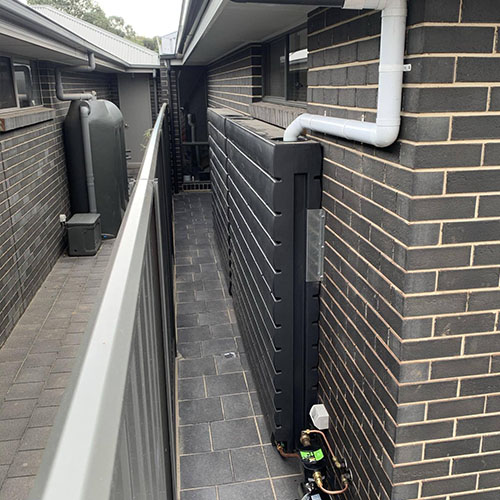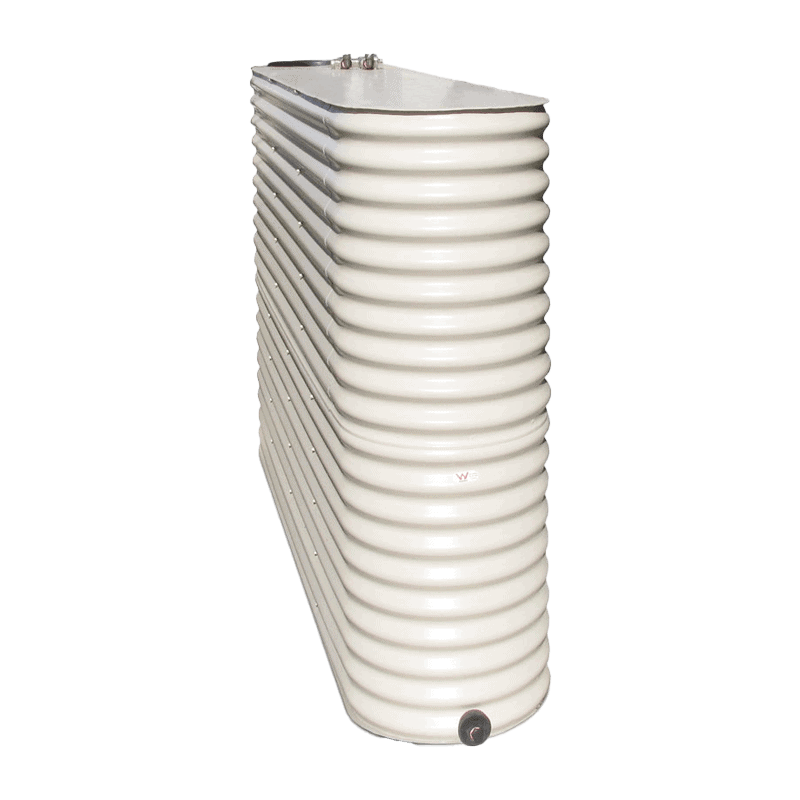Slimline Water Tanks: Elegant and Practical for Modern Residences
Wiki Article
Recognizing the Importance of Rain Storage Tanks in Drought-Prone Regions for Water Safety And Security
In regions susceptible to long term dry spells, the function of rain tanks in reinforcing water safety and security is a subject of growing value. As neighborhoods come to grips with the difficulties of water scarcity, recognizing the relevance of these tanks goes beyond mere collection of rain. Rain tanks work as a crucial device in alleviating the effect of water scarcities by offering a lasting resource of water for different needs. Nonetheless, the true value of rain containers prolongs much beyond simple storage; it incorporates resilience-building actions and the promotion of long-term water conservation approaches. This multifaceted strategy to water safety and security warrants a more detailed exam of the duty rain storage tanks play in making sure a trusted water during times of drought.Advantages of Rainwater Containers
Using rainwater tanks offers a lasting option for increasing water supply and improving water security in residential and business settings. One of the key benefits of rainwater storage tanks is their capability to reduce dependence on mains water supply.
Rain Harvesting Strategies
Rain collecting strategies encompass a variety of methods developed to effectively gather and keep rainwater for various purposes, contributing to water conservation and sustainability. One common technique is the installation of roof catchment systems, where rainwater is collected from the roof of a building and directed to a storage space container. This technique is fairly easy and affordable. One more popular technique is using above-ground or underground storage containers to keep rainwater for later use. These containers can be found in different sizes and materials to match various needs and can be connected to the existing plumbing system for easy gain access to.
Furthermore, rainfall yards and permeable sidewalks are cutting-edge techniques that entail landscape design or paving surfaces in a manner that permits rainwater to percolate into the ground, restoring groundwater reserves. Additionally, shape farming and terracing are farming techniques that help catch rainwater and avoid dirt disintegration in uneven terrain. By applying these diverse rainwater harvesting methods, communities can enhance water security and strength in drought-prone regions while promoting sustainable water monitoring practices.
Significance of Water Safety
Making certain dependable access to clean and adequate water sources is extremely important for maintaining human health, economic development, and ecological health. Water security is a vital element of social durability, especially in areas prone to dry spells and water shortage. Appropriate water safety incorporates different dimensions, including availability, quality, and ease of access of water for domestic, agricultural, commercial, and ecological requirements.Water safety plays a vital function in promoting public health by decreasing the occurrence of waterborne diseases and ensuring sanitation centers. Financially, water security is important for farming performance, industrial operations, and total financial development. Slimline water tanks. Furthermore, water safety is closely connected to ecological sustainability, as it supports ecosystems, biodiversity, and total environmental balance.
In drought-prone regions, water security comes to be even more important because of the enhanced risk of water scarcities. Applying approaches like rainwater harvesting, water recycling, and reliable water management techniques can considerably boost water safety and security in these locations. By prioritizing water protection, communities can better endure the effects of climate adjustment, populace development, and other challenges that endanger water schedule.
Enhancing Water Resilience
With raising global water difficulties, building durability in water supply has come to be an important focus for sustainable advancement initiatives. Enhancing water resilience entails implementing techniques to ensure water schedule and quality in the face of altering ecological conditions, such as droughts, floods, and contamination.One secret facet of boosting water resilience is advertising the usage of rain tanks in drought-prone regions - Slimline water tanks. Rainwater tanks act as an efficient ways of recording and saving rain for later usage, lowering dependence on scarce freshwater resources throughout completely dry Our site durations. By including rain harvesting systems right into water monitoring strategies, areas can boost their capacity to hold up against water deficiency and keep water protection

Lasting Water Conservation
In the middle of escalating water difficulties, the sensible management of water resources via lasting preservation methods is essential for making sure lasting ecological stability and societal wellness. Lasting water preservation requires the reliable use water resources to satisfy current needs without jeopardizing the capacity of future generations to fulfill their very own needs. By implementing techniques such as rainwater harvesting, greywater recycling, and water-efficient innovations, neighborhoods can minimize water wastefulness and relieve stress on freshwater resources.Furthermore, sustainable water conservation practices contribute to ecosystem health by maintaining adequate water levels in rivers, lakes, important link and wetlands, site sustaining biodiversity, and maintaining all-natural environments. These methods likewise play a vital function in alleviating the effects of environment adjustment by helping to adjust to transforming rainfall patterns and water accessibility.

Final Thought
In conclusion, rainwater containers play a vital function in enhancing water security and durability in drought-prone areas. By making use of rain harvesting methods, neighborhoods can reduce their dependence on traditional water sources and advertise lasting water conservation techniques. This not only aids mitigate the effects of water deficiency during dry spells yet also contributes to long-lasting water safety and resilience when faced with environment adjustment obstacles.Report this wiki page